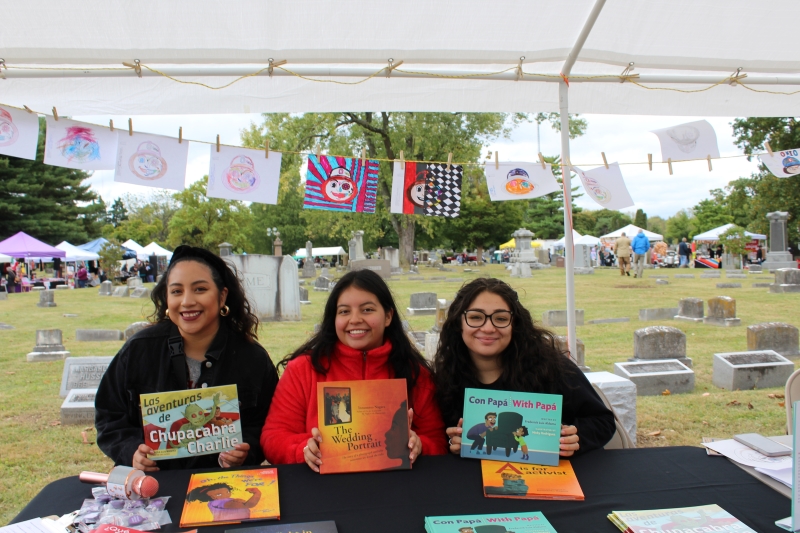 Student volunteers read and gave away books to community members
Student volunteers read and gave away books to community members
October 7 was the first chilly day in Columbus, Ohio as summer came to an end. Ohio State students and community members came together at Greenlawn Cemetery to celebrate Day of the Dead, or Día de los Muertos, and pulled out their boots, hats, flannel shirts and sweaters to keep the brisk air at bay.
Day of the Dead Columbus is hosted by Latino Arts for Humanity, a nonprofit organization that works to “encourage, develop and preserve the arts and cultural heritage of the Latino community.” At Ohio State’s tent, volunteers held a Brutus calavera coloring contest and wrote satirical poems about death, calaveritas literarias, with festivalgoers. This year’s festival also featured rows of food and art vendors, community ofrendas and live music and dancing to celebrate the dead.
To the Aztecs who first practiced Day of the Dead rituals, these markers of changing seasons meant an increased community focus on death. Paloma Martinez-Cruz, professor of Latino/a Cultural and Literary Studies, noted that though death imagery was a year-round aspect of the culture, this time of year demanded a different respect for death. “How can you not?” asked Martinez-Cruz. “We’re seeing leaves that were once blooming, now dying. We’re cold, we’re affected physically, spiritually. Everybody’s affected by that change of seasons.”
Though Day of the Dead is now often celebrated only for a day or two in early November, this was not always the case. Instead, the Aztecs’ celebration lasted a whole month, during July and August. This only changed when Spanish settlers introduced Catholicism to Indigenous people and moved the celebration to coincide with All Saints’ Day and All Souls’ Day. Latino Arts for Humanity, which has hosted the Columbus festival since 1999, preserves this month-long tradition of celebration.
In contrast to Halloween, Day of the Dead is “not meant to be spooky,” Martinez-Cruz said. “These skulls are joyful. It’s not wrong for things to be happy and sad at the same time. That’s what death is. The fact that it brings people together is beautiful.”
This meshing and coexistence of happiness and sadness is something that she was especially excited for Ohio State students to witness. “I love to share that aspect of the culture where a cemetery can be a site of celebration.”
Ohio State students helped create the celebratory atmosphere by reading aloud and giving away books donated by the Wexner Center for the Arts. Johana Coronado, a graduate student and program coordinator in the Office of Diversity and Inclusion’s Latine Student Success team, said that her love of literature and literacy is what most propels her to return to volunteer at the festival for a second year. She noted that the selection of books included ones written in Spanish, English or both, centering and embracing multilingualism in literature.
For Leila Vieira, associate director of the Center for Latin American Studies, this interaction between students and community members is one of the most impactful parts of celebrating with Latino Arts for Humanity. “Having students outside of campus, outside of the classroom using their language skills in a real environment,” Vieira said, is incredibly important. She also recognizes the importance that “student volunteers are able to give back and help to serve Hispanic and Latino communities.”